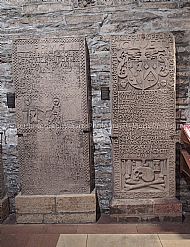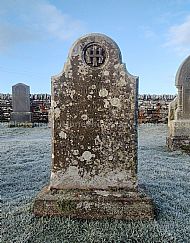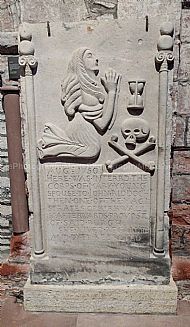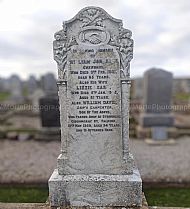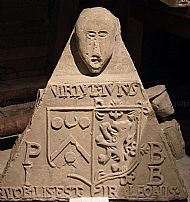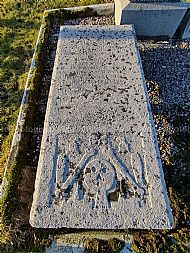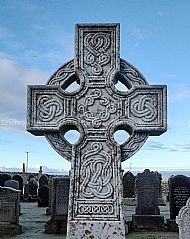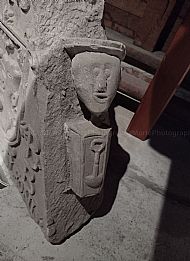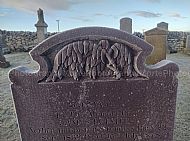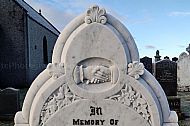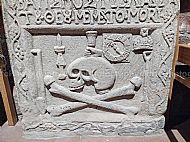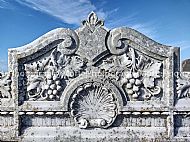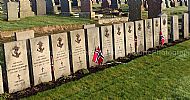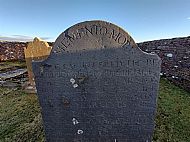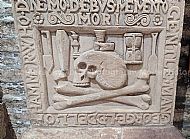Exhibition Gallery
Here is a brief selection of images that are currently on display in Orkney Museum exhibition gallery. Due to the overwhelming number of captured images, only a fraction could be put on view.
Many of the ledger stones to be found in St Magnus Cathedral, Kirkwall, depict archetypal symbols of immortality: skull and crossbones, the skull was used to represent Death, a reminder that Death comes to everyone, as indicated by the popular phrase ‘Memento Mori’, meaning ‘Remember You Will Die.’ Also present is a coffin in raised relief, a hour-glass, symbolising the passing of time, the deid-bell, a small bell rung to give notice of funerals, as well as at the funeral itself, the Sexton’s Tools, a popular emblem consisting of a spade and turf-cutter, and on occasions an inverted torch, representing death or life extinguished.
Whereas later stones exhibit aspects of 'Floriography,' the Victorian language of flowers, which spoke to the universal concepts of life and death, acting as a clandestine vocabulary for the final act of mourning. Rooted in the world of literature, it was an imported book from France, Charlotte de Latour’s (Louise Cortambert’s) Le Langage des Fleurs (1819), translated into English in 1834, that gave rise to floriography’s popularity throughout the nineteenth century. Although specific meanings had been attributed to flowers for thousands of years, the Victorians adapted many of these floral conventions to suit their own funerary needs. In the context of gravestones, flowers served as a poignant reminder of the temporary nature of life and the enduring beauty of the soul. The specific flowers chosen to commemorate the departed often reflected their personality, achievements, or the emotions felt by those who mourned their loss.

